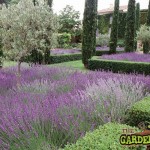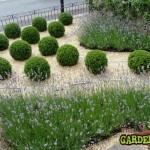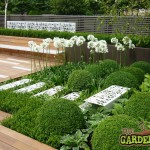Bareroot plants can be planted any time between September and April – these are the traditional planting months. That means, the these were always the most suitable time to lift, transplant and replant shrubs. This is because the months of September to April is the time when most plants in the garden are dormant and so they and their roots can be disturbed without causing serious stress to the plant.
- Box & lavender
- Box Topiary
- Buxus & Hostas
During the growing season, when nutrients are in high damage and plants need to take up water on a regular basis any disturbance of the roots can stunt or kill a plant. While containerised or potted plants can be planted any time of year, bare root plants such as bare root box hedging are restricted to the dormant season.
Box hedging is a great plant for any garden, both modern and traditional. Using box to create flower beds and parterres can create a neat and formal layout while giving year round colour and structure. The small glossy green leaves of box combines well with a wide range of plants.
Some good companion plants for box include:
- Lavendula varities
- Santonlina
- Aspleniums
- Heuchera varieties
- Varigated Hostas
- These are just some of the plants that work well with Buxus, but because of its simple form and neat appearance box can act as a backdrop or frame any range of herbaceous planting ideas and styles
Where to plant box
Buxus sempervirens prefers a light well drained soil. But it is a hardy plant and will perform well in most locations. It is happy in deep shade and if in full sun it will perform well provided there is adequate water.
How to plant box hedging
Box is generally grown for hedging but it can sometimes be planted on its own to form a single specimen or grown to shape into any form of topiary. If you are going to plant box for hedging here is what you need to do:
Mark out and dig trench:
Box is a formal hedge so should be planted in a straight orderly line. For best results mark out the area and put down a string line to ensure and neat trench. To dig the trench, first have a quick look at the plant’s roots to determine their size. The trench should be wide and deep enough to fully accommodate the roots. Generally you should dig the trench 1.5 ft deep and wide.
Prepare the soil:
This is the only time you can condition and improve your soil. Like most plants box prefer a moist but well draining soil and would need a depth of at least 12 inches topsoil. If your soil is poor draining or shallow you will need to add additional topsoil and farm yard manure. The quality of your soil will determine the amount of work required at this stage. Even the best of soils will benefit from the additional of about 4inches of farm yard manure. This manure will add moisture and some nitrogen to the soil encouraging good green growth.
Planting your box hedging:
Once your trench is dug and the base has been lined with manure you can begin planting. Start at one end and position the 1st 10 plants, spacing them 20cm apart, or 5 per metre. Ensure the roots are fully spread out and begin back filling the soil over these first few plants. Draw in the soil around the plants, levelling and fine tuning as you go. The final depth of the plant is important; ensure that the top of the root is at least 1 inch below soil level, but also ensure that the 1st side shoot is above ground level. Firm in the soil around the base of each plant – again keeping an eye on their depth and level
After care:
Water is the first requirement for any newly planted plant. It is essential to water plants in regardless of the time of year or weather conditions. Hedging and bareroot hedging will benefit from a feed too. Choose a feed high in phosphorus for the first year and there after feed with a general feed every spring


